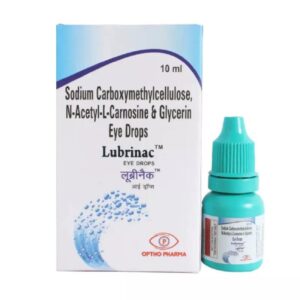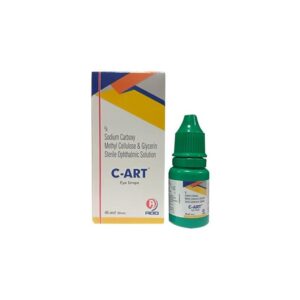GLYCERIN + SODIUM CARBOXY METHLY CELLULOSE
Glycerin: Glycerin, also known as glycerol, is a drug commonly used as a laxative and osmotic agent. It works by drawing water into the intestine, softening the stool and promoting bowel movements.
The mechanism of action of glycerin involves its ability to increase the osmotic pressure in the intestines. When glycerin is administered rectally or orally, it pulls water into the intestines by osmosis, resulting in increased fluid content in the stool. This leads to stool softening and improved bowel movements.
Glycerin is available in various forms, including suppositories, enemas, and oral solutions. The dosage and frequency of administration may vary depending on the specific product and individual’s condition. It is important to carefully read and follow the instructions provided by your healthcare provider or the product label.
As with any medication, glycerin may cause certain side effects. Common side effects may include rectal irritation, mild abdominal discomfort, and diarrhea. These side effects are generally mild and temporary, and most people tolerate glycerin well.
However, it is essential to consult a healthcare professional if you experience severe or persistent abdominal pain, rectal bleeding, or any other concerning side effects.
It is important to note that glycerin is not suitable for everyone. Individuals with certain medical conditions, such as bowel obstruction or severe dehydration, should avoid the use of glycerin. Additionally, it is essential to inform your healthcare provider about any existing medical conditions or medications you are taking before using glycerin to avoid potential interactions or complications.
Overall, glycerin is a commonly used laxative and osmotic agent that helps soften stool and promote bowel movements. It should be used as directed by a healthcare professional, and any concerns or questions should be discussed with a qualified healthcare provider.
Sodium Carboxy Methly Cellulose: Sodium Carboxy Methyl Cellulose (CMC) is a medication commonly used as an ophthalmic solution, particularly in the form of eye drops. It is classified as a lubricating agent and is used to relieve symptoms of dry eyes.
The exact mechanism of action of CMC is not well understood, but it is believed to work by forming a protective film over the surface of the eye, which helps to maintain moisture and prevent further dryness. This film also helps to stabilize the tear film on the eye’s surface.
CMC is typically administered as eye drops, with a recommended dose of one to two drops in the affected eye(s), as needed. The frequency of administration may vary depending on the severity of dry eye symptoms and the recommendations of a healthcare provider.
As with any medication, CMC can have potential side effects, although they are generally minimal and uncommon. Some possible side effects may include temporary vision blurriness or irritation upon application. If these side effects persist or worsen, it is advisable to consult a healthcare professional.
It is important to note that CMC should not be used if an individual is allergic to any of its ingredients. If any allergic reaction or severe side effects occur, immediate medical attention should be sought.
It is recommended to consult with a healthcare professional or pharmacist before using CMC eye drops, as they can provide tailored advice based on an individual’s specific condition or medication history.


